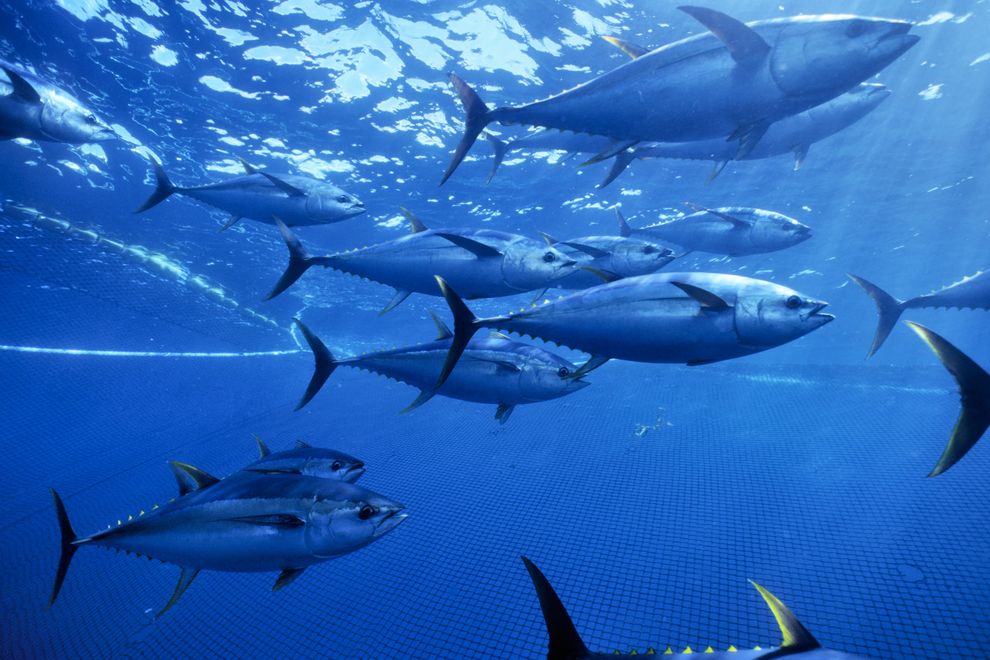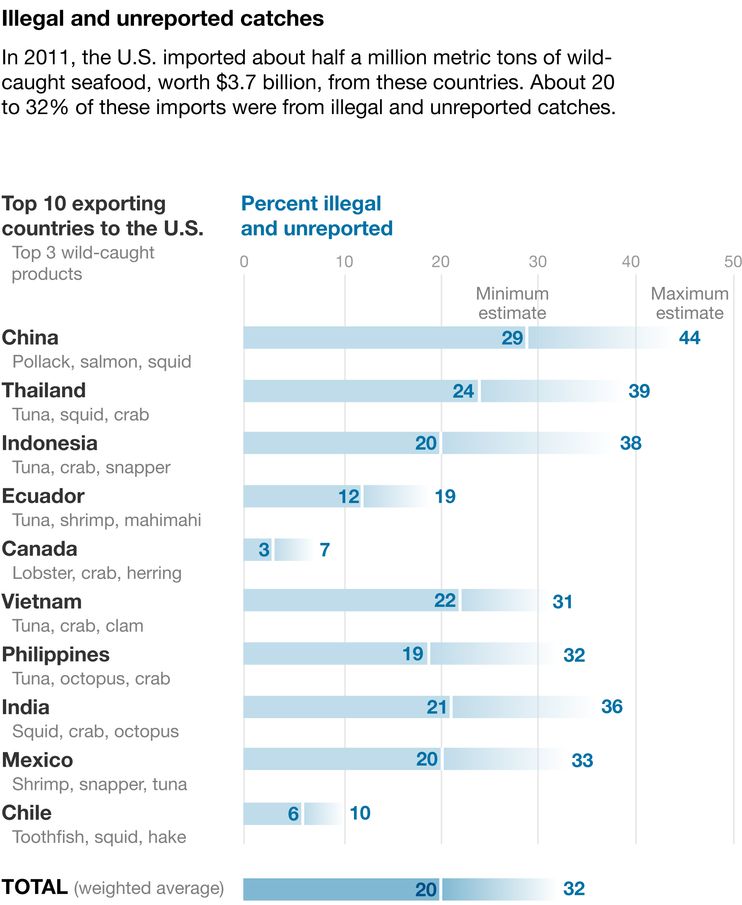Article by Brian Clark Howard | National Geographic | December 2014
Proposal seeks to improve enforcement of rules for seafood entering U.S.
Above: A school of Pacific yellowfin tuna is caught in a purse seine, a common type of fishing net for capturing fish that aggregate near the surface of the water. PHOTOGRAPH BY DOC WHITE, NATURE PICTURE LIBRARY/CORBIS
A White House task force issued new recommendations Tuesday to combat the growing problem of illegal fishing and to make it easier to tell if the fish on your plate was legally caught and imported.
The recommendations are designed to block the import of illegally caught fish and to improve traceability and transparency in the $500 billion global seafood industry.
The goal is to “level the playing field for legitimate fishers and businesses in the seafood industry and increase consumer confidence in seafood sold in the United States,” the task force, which comprises a dozen federal agencies, said in issuing its Tuesday report.
A recent study found that 20 to 32 percent of wild-caught seafood imported into the U.S. is fished illegally. The U.S. seafood market is one of the world’s largest and is valued at nearly $18 billion annually.
Above: NG STAFF. SOURCE: P. GANAPATHIRAJU, ET AL., MARINE POLICY
“Consumers have no way to know they are buying stolen goods and so are unwittingly contributing to the problem,” says Monica Medina, the senior director for international ocean policy at the National Geographic Society.
The problem has implications for conservation, with the WWF’s Michele Kuruc calling illegal fishing “the biggest obstacle to the world achieving sustainable fisheries.”
That’s because illegal fishing undercuts efforts to enforce science-based catch quotas and protect sanctuaries.
The task force recommends that Congress pass legislation to improve control of seafood at U.S. ports and to help develop guidance for electronic systems that could “collect catch information and that track data across harvest and transport vessels and fisheries management agencies.”
The new recommendations will be followed by a 30-day public comment period, before expected executive action from President Barack Obama, who in June asked for a plan to fight black-market fishing and seafood fraud.
Call for New Technology
Food products like meat and vegetables already have strong tracking systems in the U.S., but until now, seafood has been a largely unregulated Wild West.
About 14 million pounds of seafood enter the U.S. every day, from more than 130 countries and in many different forms.
Pirate fishing, as illegal fishing is often called, presents particular problems for the U.S. seafood industry, undercutting the U.S. fishing fleet, which experts say follows some of the most rigorous health and environmental rules in the world.
Kuruc, the WWF’s vice president for marine conservation, points to the example of crab. Recent analysis has shown four times as much crab labeled as coming from Russia than was legally caught in the Russian fishery.
“That’s a disadvantage to crabbers here, and I don’t think most American consumers want to eat stolen crab,” Kuruc says.
The recommendations call for improving satellite monitoring of all fishing vessels, so authorities will be alerted about activity in restricted areas, such as marine sanctuaries. The task force also called for a reciprocal agreement among nations in which law enforcement from one country could board and inspect a fishing vessel that is flying the flag of another country if it was suspected of wrongdoing in the high seas.
In addition, the task force asks the Office of the U.S. Trade Representative to work on phasing out fisheries subsidies around the world that contribute to excess fishing capacity and overfishing.
Technologies already exist to make seafood trackable, without slowing or hampering business, says Kuruc. They include barcodes, DNA field kits for identifying species, algorithms that suggest imports that need verification, and requirements for standard forms that record information such as when and where the fish was caught.
The European Union has required many of these measures since 2010, and several U.S. businesses, such as Whole Foods Market and Wegmans, require them in their own supply chains.
Still, “the task force recommendations are only a first step,” says Beth Lowell, the senior fishing campaign director for the environmental group Oceana. “The president must now ensure that they are fully implemented.”







